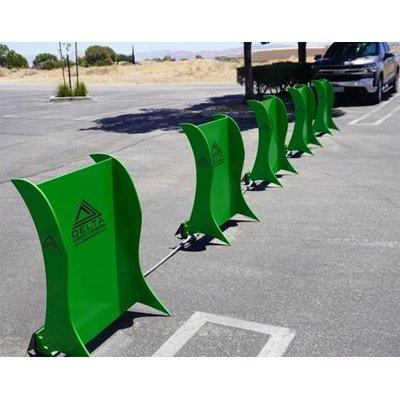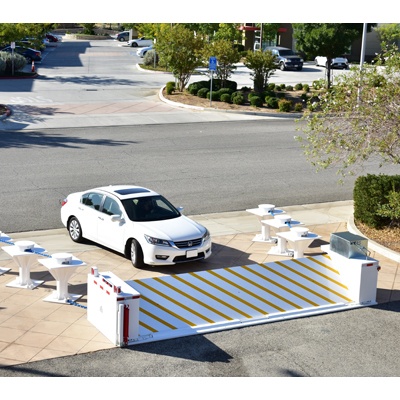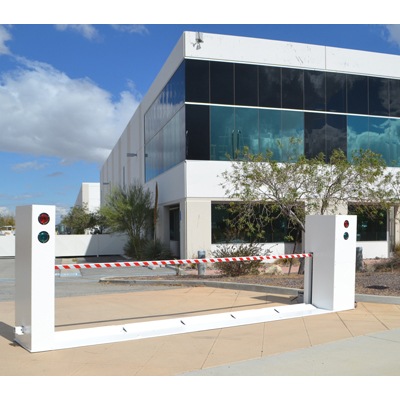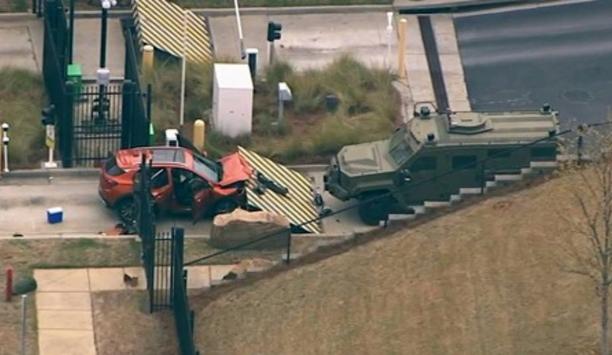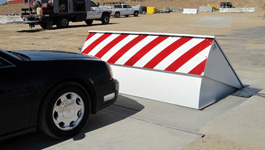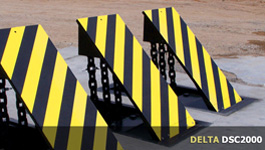 |
| Penn State University uses seven of Delta's barriers for home football games and special events for vehicle control and protection |
Keeping pedestrians safe, protecting structures from accidental or intentional automobile crashes, and force protection (keeping employees and visitors from harm) have always been campus safety concerns. A wide variety of campuses find peace of mind through the use of barriers, barricades and bollards for vehicle-based physical access control at their perimeters.
Permanent barriers and barricades
Delta’s bollards are the most used permanent solutions used on campuses. For instance, fixed post bollards protect the perimeter of buildings at Boston University Medical Centre. At Stanford University, the primary use of permanent pneumatically-operated bollards is to restrict vehicular traffic from entering the campus via maintenance roads. They are lowered to allow access to maintenance vehicles and raised immediately.
Bollard systems operate individually or in groups up to ten and are used for intermediate level security applications. Individual bollards are up to 12.75 inches in diameter, up to 35 inches high and are usually mounted on 3-5 foot centres. They are tested to stop and destroy an attacking vehicle weighing 10,000 pounds moving at 65 miles per hour or a 20,000-pound vehicle moving at 46 miles per hour.
With bollards you can create the look you want. Ranging from faceted, fluted, tapered, rings and ripples, colours, pillars, to shields, emblems and logos, bollards are aesthetically pleasing and versatile. You can specify ornamental steel trim attached directly to the bollard, or select cast aluminium sleeves, which slip right over the crash tube. Bollards can be galvanised for corrosion resistance, fitted with an internal warning light for increased visibility and engineered to suit high traffic volume. If damaged, simply slip off the old and slip on the new.
UCLA uses decorative bollards throughout the campus to restrict vehicle access to student housing areas and other locations which require temporary removal. Some of the areas block access to dumpsters and roads that require temporary access during admission periods.
Decorative bollards also protect the George H.W. Bush Presidential Library and Museum, located on a ninety-acre site on the West Campus of Texas A&M University. These bollards are designed to protect facilities from those not authorised to enter or others driving errant vehicles.
Temporary barriers are especially popular on campuses
These bollards are designed to |
Quite often, vehicle access is required temporarily. Parking for the football game, a grand opening for the new wing, freshman matriculation day and open houses are temporary events needing only a temporary solution. Fortunately, such equipment now exists in the form of portable, towable barriers. These barriers can be deployed quickly and effectively, even in places where it's impossible to excavate for a permanent foundation.
From a purchasing standpoint, it can be easier to purchase portable barriers than permanent barriers. The latter are oftentimes placed into an organisation’s real assets budget because they are permanently installed into the ground, becoming part of the property. Such budgets can often create complex purchasing scenarios for an organisation. However, purchasing portable barriers is no different than buying a golf cart or new set of wrenches for the maintenance department.
Able to be deployed in 15 minutes, they can quickly protect facilities and people from vehicle attacks and accidents. These mobile crash barriers can be towed into position by a medium-sized pick-up truck or equivalent. They deploy in 15 minutes and operate locally or remotely for guard protection.
Deployment, retrieval and operation are all hydraulic. The barriers stop and disable a 15,000-pound vehicle moving at 30 mph. Once positioned, the mobile barricade is separated from its transporter and lowered into position by means of a battery-operated hydraulic power system, which is then used to raise or lower the barrier for normal or emergency tasks.
Penn State University uses seven of these barriers for home football games and special events for vehicle control and protection. Like similar applications at the University of Michigan, Ohio State and others, PSU is able to quickly deploy these barriers at strategic sites around the facility. After the event, they are quickly knocked down and towed to another location.
No application too large or small
Protecting perimeters of facilities is no small responsibility. Knowing you've got the right equipment in place to secure the facility and to prevent human tragedy brings a peace of mind that no amount of money can buy. Carefully researching available options and consulting with experts will ultimately lead to the right solution.
Learn why leading casinos are upgrading to smarter, faster, and more compliant systems


